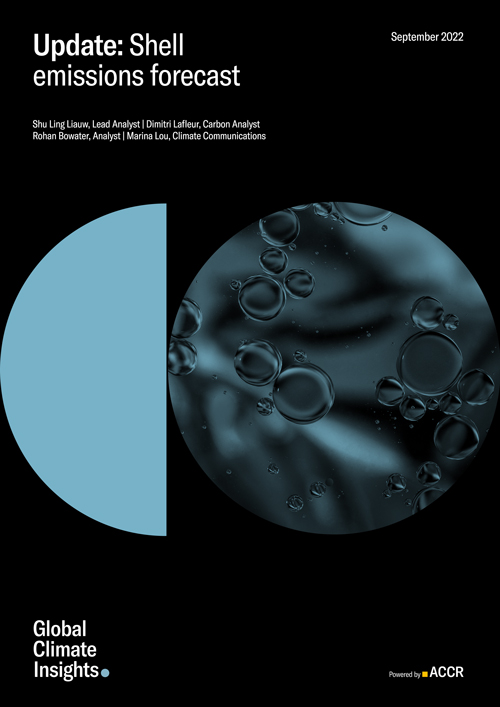Update: Shell emissions forecast

Lowering Shell’s FY30 emission forecast post 1H22, shrinking but not yet transitioning
Shell’s FY30 absolute emissions are forecast to reach 1,691 Mt CO2e, 22% above FY21 (1,381 Mt CO2e) and 9% lower than our prior forecast due to lower oil and gas volumes, and divestments. Shell’s recent performance indicates it is right-sizing its oil and gas business but not yet transitioning customers to alternatives. A 15-56% CAGR in low carbon fuels sales is needed between FY22-FY30 to deliver on net-zero ambitions. Lack of guidance on 3rd party pipeline gas and 3rd party oil sales (~43% of emissions in FY21) creates a risk to our forecast. If they grow faster than expected, emissions will be higher.
Are we asking for the right things in seeking net zero?
Not yet. Stakeholders overly fixate on the targeted emissions reduction number and not the strategy. Even though we forecast Shell will achieve its FY30 target of 20% reduction in net carbon intensity, absolute emissions are forecast to be 20% higher in FY30 than FY19 (ex. divestment, CCUS, offsets). Greater scrutiny is needed. Our analysis indicates that existing decarbonisation levers focus on lowering corporate emissions boundaries. Stakeholders need to question precisely how these measures will contribute to real-world emissions reduction for 1.5°C.
Our view on stepping up climate integration
A credible transition plan should prioritise 1.5°C alignment and leverage its challenges as a driver for business growth and innovation. Shell can improve its strategy by quantifying how it will transition existing oil and gas customers to zero carbon alternatives. The strengths of Shell’s plan are: 1) Shell’s integrated model has the opportunity to accelerate customer transition to low carbon, 2) its disclosure of GHG emissions appears more complete than peers. Key gaps remain: 1) linkage between customer decarbonisation with scope 3 absolute emissions reduction, 2) climate strategy for responsible divestment, 3) over-reliance on uptake of CCUS and offsets.
Chart: Forecast absolute GHG emissions (Mt CO2e, excludes CCUS and offsets)
Download the Shell Emissions Forecast PDF for more detailed comparison data.
Please read the terms and conditions attached to the use of this site.
